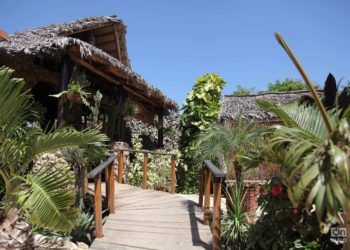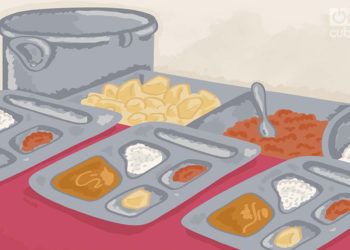La Cueva Taína
Far away from the center of the city of Gibara, in the humble community of El Güirito, live Jorge and Josefa, owners and chefs for six years of a paladar that exhibits decorative elements alluding to the Taino and rural cultures. The rock formation and sculpture of an indigenous man at the façade invites us to enter, as if we were entering a cave that, a few steps away, opens up to welcome the light that illuminates and discovers attributes of rural nature. La Cueva Taína’s specialty is seafood and Cuban cuisine. They include millenary-old foods like the nutritious crab eggs in their budín de caro (expensive pudding) – related to how expensive the price of fritters was for the townspeople, a referent of that soft pudding, of an intense orange color and a delicious flavor -, or the typical freshwater crab meat served in its carapace or over a piece of cassava bread. Its gibareño rice is dry or desgranado (fluffy, as it is said in Cuban homes), yellow, cooked with natural herbs like turmeric and bija and with coquinas - snails that abound in the coastal zone of Gibara -, fresh fish, shrimps, freshwater crabs and crabs. Another...







